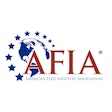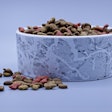In 2001, the US Food and Drug Administration (FDA) approved a petition broadening the use of irradiation of animal feeds to include petfoods, treats and chews. That same year, the Association of American Feed Control Officials (AAFCO) accepted the feed term "natural" and established guidelines concerning its use on petfood labels.
Because these two independent matters were in development during the same period, the AAFCO definition fails to address whether an irradiated product is considered natural. A recent letter from FDA to the chair of the AAFCO Pet Food Committee opines it currently does not.
What is irradiation?
Under FDA regulations, ionizing radiation can be from either of two origins:
- X-rays generated from machine sources; or
- Gamma rays emitted during radioactive decay of radionuclides.
The former are the result of energy shifts in orbiting electrons of molecules, while the latter come from energy shifts within the nuclei of atoms. Other than their origins, though, the two types of radiation are virtually indistinguishable from each other, as the range of wavelengths used to define one versus the other largely overlap.
In neither case does the food incorporate or come in direct contact with radioactive material, nor is there a chemically synthetic step to the process.
The approved purpose of irradiation of petfoods is for microbial disinfection, control or elimination. While not intended as a replacement for other appropriate sanitation measures, it gives the manufacturer another weapon in the arsenal against potential microbial contamination. Irradiation may be more suitable for some types of pet products compared to others, but considering the heightened concern regarding petfood safety today, all manufacturers should consider it a potential means to address safety issues.
Natural or not?
There are many different ways to interpret "natural," which led to wide misuse of the term on petfood labels in the past. To help provide consistency in meaning and a basis to uniformly interpret use of the term, AAFCO defined it to differentiate products and ingredients in terms of their sources and processing methods. For example, natural products or ingredients must be of animal, plant or mined sources but can be ground, cooked, dried, rendered, purified, extracted, hydrolyzed or even fermented.
The key factor in determining the applicability of the term is that anything that is manufactured by means of chemical synthesis or contains a chemically synthetic substance is not natural (at least not without further qualification, such as with a petfood containing synthetic vitamins but otherwise meeting the definition).
Of course, not all people would necessarily agree with this definition. For example, many consumers would not consider chicken meal, wheat middlings, sugar or salt to be natural, but those ingredients are natural under AAFCO. On the other hand, because the bulk of commercial ascorbic acid (vitamin C) used in petfoods is chemically synthesized, this source would not be natural, despite the fact that vitamin C occurs in nature as well.
Aside from these perceived discrepancies, the AAFCO definition as it exists today is the only basis by which the matter of irradiation can be rationally discussed.
Why is FDA concerned?
In its letter to AAFCO, FDA rightly notes that irradiation is not the same as heat processing, rendering or other processes allowed under the natural definition. It ponders whether purification could apply to irradiation, but frankly, I do not believe that was the intent when the definition was drafted.
Rather, the process most likely was not mentioned because irradiation was not approved for use in petfoods while the definition was being developed. Unfortunately, the list of processes is not preceded by "such as" or similar phraseology that would allow for tacit extension of the list when appropriate. Thus, FDA concludes that irradiation effectively nullifies characterization of a product with the term "natural" as currently defined.
While irradiation may not be expressly named among the allowed processes for natural products or ingredients, the intent of irradiation is the same as some of the processes that are allowed, which ultimately is to help ensure microbial safety of the finished product. Essentially, heat is another form of radiation (infrared).
Also, ionizing radiation cannot be characterized as, nor does it result in, chemical synthesis, the key part of the natural definition. In my opinion, then, irradiation should be included among the processes allowed.
Let consumers decide?
Under current FDA regulations, the labels of irradiated petfoods must bear a Radura symbol, accompanied by the words "treated by irradiation" or "treated with radiation." FDA notes in its letter that few consumers may think of irradiation as natural. That may be true, but the same could be said of other processes or ingredients currently allowed under the natural definition.
Regardless, as long as the label discloses that the product has been irradiated as required under the regulations, it should be up to consumers to decide whether use of the term natural to describe that same product is inconsistent. They can then make their purchasing decisions accordingly.
I would encourage amendment of the AAFCO definition for natural to include irradiation for sake of clarity. In the interim, I hope state feed control officials look at the spirit of the definition and opt not to enforce label changes that could, in fact, compromise the safety of petfoods.















